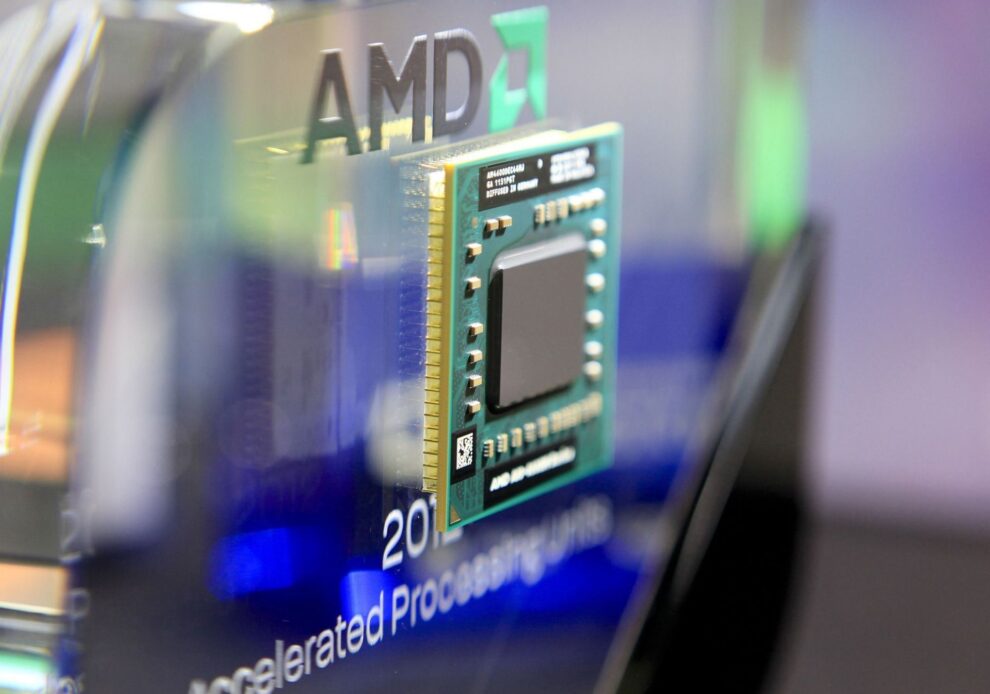
(Bloomberg) — Advanced Micro Devices Inc. agreed to buy Xilinx Inc. for $35 billion in stock, one of the largest chip acquisitions ever, a transaction that gives the former industry also-ran more products and a bigger research budget to challenge leader Intel Corp.
Xilinx investors will get 1.7234 AMD shares for each Xilinx stock they own. That values Xilinx at about $143 a share, 25% more than the closing price on Monday and 35% above the price before news of a possible deal was reported earlier in October.
The deal is a coup for AMD Chief Executive Officer Lisa Su, creating a company with a larger research-and-development budget and a broader array of products to take on Intel Corp. It also tips the industry into a record year for acquisitions. AMD shares slid 3.5% in New York, leaving them up about 74% this year. Xilinx rose 10% for a gain of 29% so far in 2020.
Since taking over in 2014 when AMD was in crisis, Su has slashed debt and overseen the development of more powerful processors. Revenue and profit have surged and the stock has soared. Now Su is using that currency to snap up a company with complementary products that generate steady cash flow.
The CEO said she won’t be distracted by the acquisition and will continue to deliver products that meet performance expectations, on time. The combined company will aim for 20% annual revenue growth, the same target as AMD, Su said.
“We’ve built a very strong execution capability. That’s core to my DNA and core to today’s AMD,” Su said in a phone interview. “This is about what’s the next step for AMD.”
Some investors and analysts were concerned that AMD might borrow heavily to pay for a Xilinx acquisition, repeating costly mistakes from more than a decade ago. The all-stock deal unveiled on Tuesday should calm those fears.
Read more: AMD Tries to Avoid Past Debt-Ridden Deal Mistakes
AMD also reported third-quarter results that beat Wall Street estimates and gave a strong revenue forecast for the current period, buoying confidence in Su’s ability to absorb Xilinx and keep powering growth. Sales in the fourth quarter will be about $3 billion, a jump of 41% from a year earlier. On average analysts had projected $2.62 billion. That follows an increase of 56% in the third quarter on demand for PC, gaming and data center processors.
In contrast with Intel last week, Su said demand for data center chips remains strong and believes AMD gained market share. “We are on track to deliver significant annual revenue growth this year and have never been more confident in our trajectory,” she added.
The acquisition still needs to be approved by shareholders and regulators, including authorities in China. AMD is targeting the end of 2021 for the deal to close. When it does, the transaction will immediately improve AMD’s profitability, cash flow and revenue growth, AMD said in a statement.
AMD shareholders will own 74% of the new company. AMD will pay Xilinx $1.5 billion if the deal fails to close in certain circumstances. For Xilinx, that fee is $1 billion, according to a regulatory filing. AMD would also have to pay a lower $1 billion fee if it can’t get regulatory approvals in time.
Su will be CEO of the new company and Xilinx’s Victor Peng will be president, overseeing the Xilinx business and strategic growth initiatives.
“We had a great path as a standalone company,” Peng said in an interview. “This is about choosing to be part of an even greater company which is AMD.”
Read more about the AMD CEO here
The deal will give Su more of the pieces she needs to break Intel’s stranglehold on the profitable market for data center computer components. Xilinx, based in San Jose, California, makes field programmable gate arrays, or FPGAs. That kind of chip is unique because its function can be altered by software, even after it’s been installed in a piece of machinery.
FPGAs are used in wireless networks, so the purchase will give AMD new telecommunications customers just as that industry spends billions of dollars to build fifth-generation, or 5G, services. Xilinx is also rapidly expanding in data centers, where its chips accelerate computing and help connect servers. The other major FPGA supplier is Intel, which gained its market position through the purchase of Altera Corp. in 2015.Xilinx last week reported quarterly data center sales were up 30% and now account for 14% of total revenue. While it generates less revenue than AMD, Xilinx is more profitable.
The transaction is partly driven by the growth of big cloud-computing providers such as Amazon.com Inc. and Alphabet Inc.’s Google. Those companies are spending heavily on new data centers to meet a surge in demand for computing power delivered via the internet. They’ve become major purchasers of server chips, which run thousands of computers that are packed into these data centers.
The cloud providers are also racing to enhance services, such as search, with artificial intelligence software, and many companies are experimenting with building their own hardware to do so. That’s putting greater pressure on chipmakers to improve their offerings.
At the same time, devices in some of Xilinx’s traditional markets, such as automotive and networking, are increasingly taking on more of the attributes of computers. AMD currently doesn’t have access to those customers, while Intel does.
Credit Suisse and DBO Partners advised AMD. Morgan Stanley advised Xilinx.
(Updates with CEO comments in sixth paragraph. An earlier version of this story was updated to correct the time required for regulatory approval of the deal.)
For more articles like this, please visit us at bloomberg.com
Subscribe now to stay ahead with the most trusted business news source.
©2020 Bloomberg L.P.








